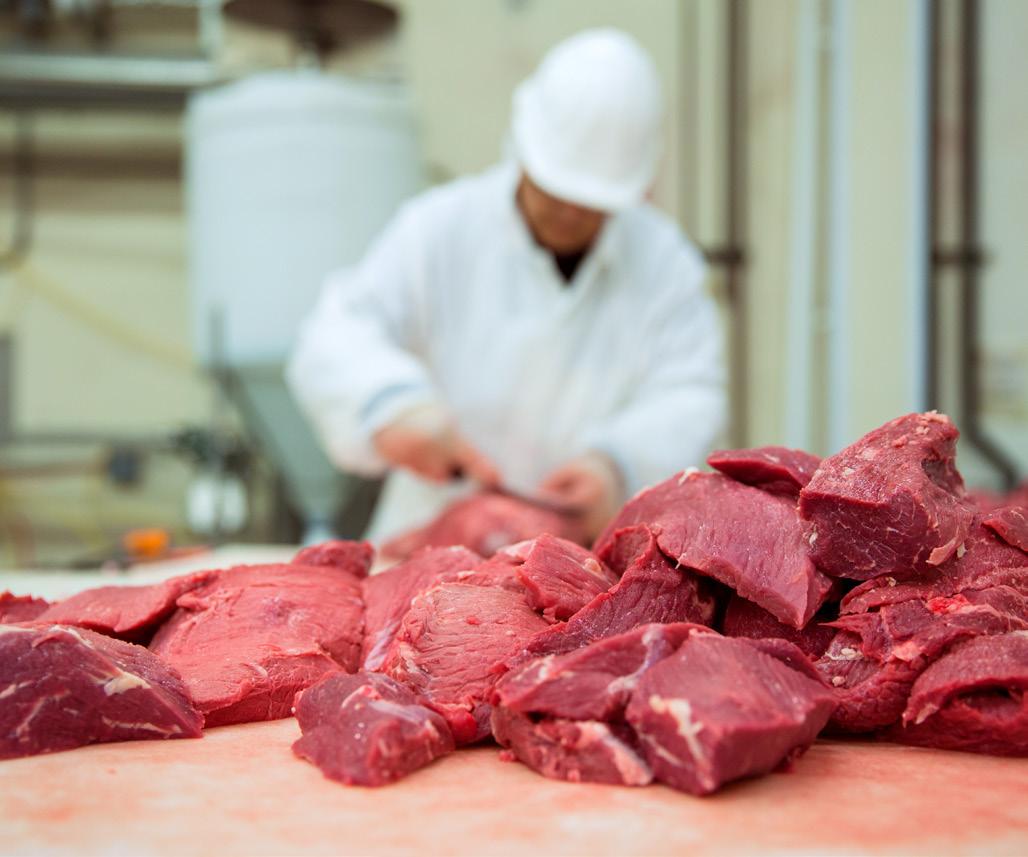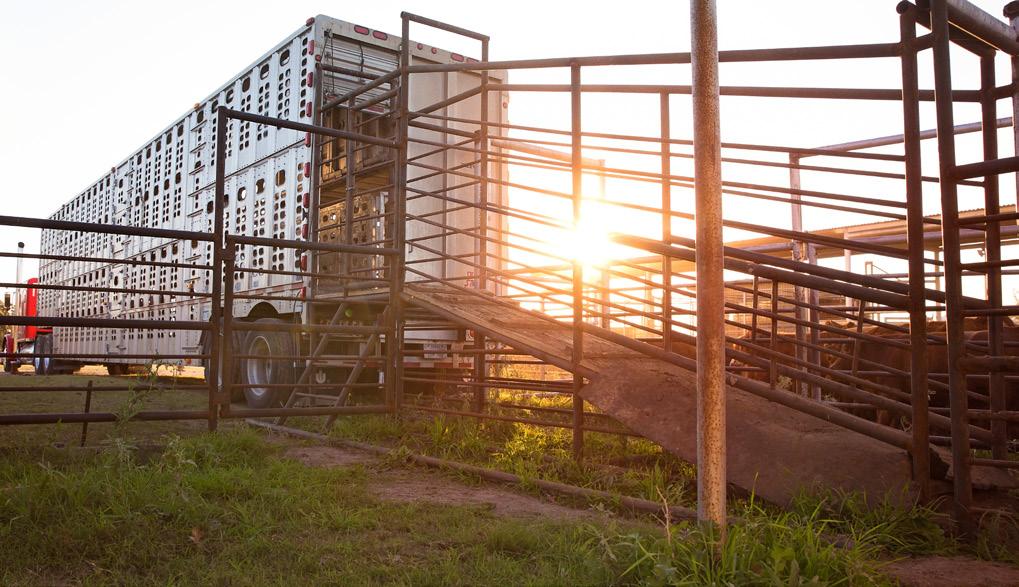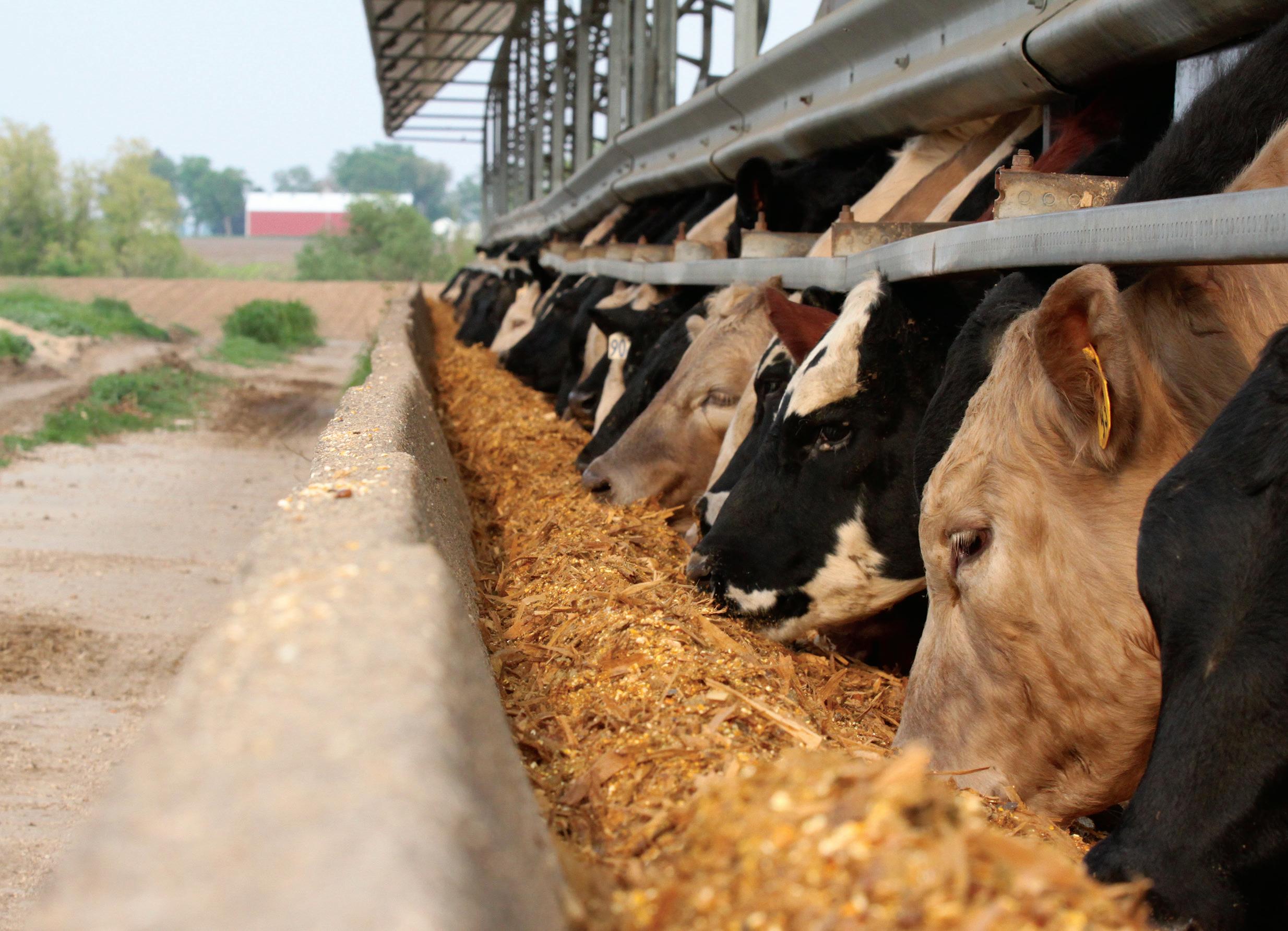
14 minute read
Cattle Market Transparency In Pursuit of Price Discovery and Member Input
In pursuit of price discovery and member input In pursuit of price discovery and member input
Advertisement
by Josh St. Peters
Over the last eighteen months, depressed prices have driven producers, industry groups and legislators to closely evaluate the complex factors influencing transparency and price discovery in live cattle markets, especially in the finished cattle sector. It is a challenging discussion that has been exacerbated by the increasing spread between cash cattle values and boxed beef cutout values; while producer revenues have remained stagnant, meat packers have enjoyed robust profits and record income as the result of very strong retail demand for beef.
Illinois Beef Association leadership has worked to understand how the issue impacts cattle operations in our state, partnering with other state and national cattle groups to advocate for action supported by the grassroots membership. The topic is a top priority for staff and board members here at IBA and has been the focus of policy discussions and ongoing research to identify paths forward that benefit the entire cattle industry, especially Illinois livestock producers. Focus on price discovery has centered around finished or fat cattle, given the divergent ratios between packer values and prices paid for fed cattle.
Through the first quarter of 2021, that spread in the ratio has been steadily apparent. In an April 28 article titled “Cattle Market Caught Saving the Day but Selling Out Out Tomorrow” published by DTN/Progressive Farmer, author and market analyst ShayLe Stewart pointed out that the negotiated cash cattle market is being cut short by two problems: the processing supply chain is experiencing problems, and packers are able to buy cattle with time.
This argument of buying cattle with time is supported if you look at the data on the cattle purchases reported by packers on a weekly basis. From the DTN/Progressive Farmer article, USDA data showed for the week of January 4, 2021, 72% of the cattle bought by packers were for nearby delivery. Meanwhile, in the same reporting period 28% of the purchases were for deferred delivery.
Follow the week-by-week data up to the time the story was published, during the week of April 25, 2021, and the USDA reports show 52% of the cattle bought were for nearby delivery and 48% were for deferred delivery. The four months of data show a trendline from January through April of steadily increasing forward bought cattle in the weekly reports. This translates to less demand for cash transactions in the countryside, with packers having a growing supply of forward contracted cattle coming into the plants. It also complicates the overall profitability issue further, as formula pricing often uses cash prices as the base for determining value.
With a strong supply of beef coming through the pipeline, the industry sits with a supply and demand problem; too many feeders and fats on the market, and not enough need from packers to create aggressive competition for those
those animals. Meanwhile, retail demand from consumers continues to be strong, so beef cuts are selling at a premium and packers are making strong profits with every carcass they harvest.
A Fire and a Virus
The near-term challenges with cattle market price discovery aren’t new; legacy cattlemen point to prior market cycles where the topic was debated – typically at points where the value of beef at the retail counter was strong, while cash values in the country were weak. But the situation garnered extra attention and faced tougher critics over the last year and a half due to two unprecedented and unrelated events: the August 2019 fire at Tyson’s Holcomb, Kan., beef processing plant and the March 2020 onset of the global COVID-19 pandemic.
Separately, both incidents created near-term crisis in the cattle market; they surfaced significant breaks in the beef supply chain, bottlenecking movement of finished cattle to plants and driving retail prices higher. The economic outcomes of the fire and the virus were similar in creating profit opportunities for packers, while pulling the rug out from underneath producers who were already in strained positions.
In the months that followed the Holcomb fire, rumors and criticism led to formal investigations by federal agencies. There was scrutiny placed on packers and their U.S. operations, as the Department of Agriculture and the Department of Justice sought answers about market transparency. Amid this same period in the first half of 2020, as the pandemic unfolded, supply chain challenges seemed to pancake. Packers had to shutter some processing facilities, due to worker absences and virus outbreaks. The public experienced meat shortages at some grocery locations, filling news headlines and creating a steady increase in the retail value of beef cuts; state and local quarantines shifted beef demand from restaurant dining to in-home consumption, creating big opportunities for the processors who could pivot their supply and capture added dollars.
But again, the slow and frequently halted processing lines inside packing plants deflated demand for live cattle; the industry was again scrambling to find a solution for market-ready animals that no longer had delivery dates. And this marketplace was still recovering from the longtail of the inventory logjam created months before with the Holcomb fire. Oklahoma State University’s Extension Livestock expert, Dr. Derrell Peel, determined that the U.S. cattle industry had likely been hit with a devastating $13.6 billion economic storm in the wake of 2020’s COVID outbreak. His damage assessment, developed with National Cattlemen’s Beef Association Center for Public Policy, painted a very bleak picture of severe financial losses on every one of the more than 800,000 cattle operations across the country.
Fortunately, beef industry experts and public officials worked quickly in the second half of 2020 to align with government agencies and packer representatives. Groups like Illinois Beef Association and other state organizations, along with NCBA, were pulling together beef leaders alongside lawmakers to come up with plans to put some strength back in the farm economy. Government programs were implemented in response to the economic toil; USDA worked to open federal disaster assistance to cattlemen, along with producers of other commodities, to provide some assistance with the income challenges.
Senators Offer Proposals for Accountability
In the spring of 2020, the rumors and angst about cattle markets had drawn legislative actions from elected officials on Capitol Hill. Senator Chuck Grassley (R-Iowa) and a bi-partisan group of colleagues from five other states introduced a cattle pricing bill. The legislation was proposed to increase competition and transparency among meat packers, according to Grassley’s office. He said it was aimed at major meat packers who would be required to purchase at least 50 percent of their weekly beef slaughter volume on the open or spot market. In introducing the bill, Grassley specifically cited the Holcomb fire and COVID-19 impacts as the driving forces behind his proposal. In his news release about the bill, co-sponsoring Senators stated that forcing meat packers “to engage in more spot transactions” would bring up formula prices for cattle marketers, creating a more accurate, flexible, and transparent livestock market.
Grassley’s bill was celebrated by some corners of the industry, as a potential step in the right direction. But additional regulations enforced by the federal government were not welcomed by all cattle producers. NCBA’s statement following the Iowa Senator’s announcement was clear, “Government mandates, like that being proposed by Senator Grassley, would arbitrarily force many cattle producers to change the way they do business,” stated South Dakota Rancher Todd Wilkinson, NCBA’s Policy Division Chair at the time.
In late September of last year, U.S. Senator Deb Fischer (R-Neb.) introduced her own legislation that she said was intended to restore transparency and accountability in the cattle market. Her proposal would establish regional negotiated cash minimums for packers, using localized data to determine the mandated level. This bill required a specific portion of each packer’s finished cattle purchases occurring

as cash transactions, while also sharing significantly more market information than previously available to the public. She told farm groups and reporters that she expected the change to ensure “a sufficient number of cash transactions to facilitate price discovery and equip producers with more price information.”
In September, IBA joined with 16 other state beef organizations, sending a letter to bi-partisan leaders in Congress asking for support of Fischer’s legislation. The message, sent with signatures from fellow cattle groups in South Dakota, Iowa, Ohio, Missouri, Wisconsin, and Nebraska among others, highlighted four key aspects that could benefit the cattle industry: 1) regional cash minimums for negotiated trade in finished cattle, 2) a beef contract library that USDA would publish and maintain giving public access to marketing contracts between packers and producers to inform negotiation of favorable contracts, 3) 14day slaughter reporting by each major packer, requiring these processors to share the number of cattle they have scheduled for harvest in a two-week outlook, and 4) reinforcement of rules requiring USDA to report information collected, mitigating a common complaint that USDA has not typically reported all of the collected data over concerns about confidentiality.
This backing of Fischer’s proposal was not fully supported across the entire industry, either. NCBA cited the national organization’s prior policy discussion as reasoning for their desire for more discussion on the topic:
“Price discovery is an issue of critical importance to cow/ calf producers, stockers, backgrounders, and feeders across the United States, and more negotiated trade is needed throughout the cattle feeding regions to ensure sufficient price discovery. That is why all of NCBA’s 46 state affiliate organizations unanimously adopted a fed cattle price discovery policy at our 2020 Summer Business Meeting. This policy directs NCBA to pursue a voluntary approach to price discovery that includes triggers established by a working group of producer members which, if tripped due to a lack of regionally sufficient negotiated trade, would prompt NCBA to seek legislative or regulatory solutions—such as those outlined in Sen. Fischer’s bill—to achieve robust price discovery.
“Sen. Fischer’s bill explores many avenues to improve transparency in the cattle markets. The creation of a cattle contracts library and clarification of confidentiality rules will provide crucial data to cattle producers as they seek to make informed marketing decisions. However, our policy dictates that the voluntary framework we are developing be allowed the opportunity to succeed or fail before we can lend our support to regional mandatory minimums for negotiated trade.”
Leaders Tasked with Considering Industry Solutions
A few weeks after the Fischer bill was introduced, NCBA sent a letter to all membership highlighting the significant work that had been underway specific to the issues with price discovery. The message highlighted the fact that this work had paved the way for the organization’s appointment of the Live Cattle Marketing Working Group – put in place following the Holcomb fire, and before COVID-19 had impacted society. In the letter, NCBA shared that the Working Group’s initial findings from their price discovery review had been shared during a six-hour session at the organization’s Summer Business Meeting in 2020. At the conclusion of that summer meeting, NCBA adopted the Fed Cattle Price Discovery policy cited in their response to the Fischer bill.
The letter detailed how the summer policy decision further resulted in the appointment of a seven-member Regional Triggers Subgroup, who were meeting on a biweekly basis to deliver a voluntary framework to achieve price discovery in the fed cattle market.
NCBA’s then-President Marty Smith further explained in his note: “this approach lays out a plan to increase negotiated trade and incentivize each of the major packers’ participation in such negotiated trade. The framework explains in detail what we are calling the “75% Plan,” which is designed to provide negotiated trade and packer participation benchmarks for the industry to strive toward. In essence, the Subgroup will evaluate the weekly negotiated trade information for each of the USDA Agricultural Marketing Service’s cattle feeding reporting regions on a quarterly basis in arrears. Eventually, the Subgroup will include in its evaluation an analysis of packer participation data, but this information is not yet published under Livestock Mandatory Reporting. To avoid tripping triggers, in any given quarter, each region will have to: • Achieve no less than 75% of the weekly negotiated trade volume that current academic literature indicates is necessary for “robust” price discovery in that specific region, • Achieve this negotiated trade threshold no less than 75% of the reporting weeks in a quarter, • Achieve no less than 75% of the weekly packer participation requirements, to be determined in short order, and assigned to each specific region, • Achieve this packer participation threshold no less than 75% of the reporting weeks in a quarter.
In the event that triggers are tripped in any two out of four rolling quarters, the Subgroup will recommend that NCBA pursue a legislative or regulatory solution to compel robust price discovery. The Subgroup will take into account black swans on a case-by-case basis, which are outlined in

the force majeure section of the document and may allow for flexibility within the 75% Plan if events disrupt the normal flow of cattle in a quarter. Periodic adjustments may need to be made to the framework in the event that academic literature is updated, technological advances are made, or other conditions of supply and demand have changed. The Subgroup will make these adjustments on an as-needed basis.”
In the months that followed, neither the Fischer bill nor the Grassley bill advanced in Congress, as legislative progress on most fronts was delayed in D.C. due to Presidential elections and continued debate about COVID response.
New Year, New Efforts
Unfortunately, cattle markets at the beginning of 2021 continued to show signs of struggle. Some optimism was seen coming into the winter, but it began to dwindle with climbing commodity prices adding financial complexity to the backlog remaining in the cattle supply chain. In the first quarter of this year, as NCBA’s Live Cattle Marketing Working Group continued their studies, and as state beef affiliate groups worked with producers to understand local impacts, political leaders in Washington reignited their calls for action. Fischer stepped forward and reintroduced her bill in the Senate, and days later Grassley followed suit reintroducing his proposal as well.
In early April, shortly following the announcements from both Senators about their respective bills, NCBA President Jerry Bohn sent a follow-up letter to members and State Beef Councils providing an update on the Live Cattle Marketing Working Groups on-going study of markets:
“After evaluating the weekly USDA-AMS negotiated trade data in the five major cattle feeding reporting regions, the subgroup has determined that a major trigger was tripped during the first quarter of 2021. According to our memberapproved framework, if another major trigger is tripped during any of the remaining quarters this year, NCBA will pursue a legislative or regulatory solution to increase negotiated trade as determined by our membership.”

Your Input Needed to Shape Illinois Beef Policy
As cited by NCBA in their member letters, cattle organizations adopt policy through the input and opinions of their members and IBA is working from the same approach. Our work to date has been driven by the policies put in place during the summer of 2020, following discussion and outreach by board leaders and staff with cattle feeders across Illinois. This is reflected in the letter sent last September with those other 16 state organizations, delivering on the IBA cattle market transparency policies (republished in the March-April 2021 issue of Illinois Beef magazine). Input from members continues to shape the actions of this organization, and IBA desires to understand how every producer in the state is impacted by these challenging circumstances in the marketplace. Board leaders are also working to further understand what actions the membership would like to see taken in the debate about government regulation over price discovery and market transparency issues in the cattle industry. To achieve this desired understanding, in the most recent meeting of IBA’s Board of Governors, the IBA Policy Division voted unanimously to approve a full survey of active members across the state. This study is designed to capture a clearer picture of how many IBA members are impacted by the topics discussed in finished cattle market dynamics, and the survey also seeks to understand how our members are marketing their fat cattle in the market. It is the goal of this initiative to identify what policy IBA’s current members support regarding the items being debated within cattle organizations and by our elected representatives in Washington.
Every member is asked to complete the survey, online at www.illinoisbeef.com/survey. The entire process takes less than ten minutes and will provide critical information for upcoming discussion and decision among our membership and leadership. The survey is open for your input now and will close in the coming weeks. Our goal is to have a full report on the survey findings in the July-August issue of Illinois Beef magazine, and the information will inform IBA input to NCBA’s policy discussions.
Questions about the survey can be directed to the Illinois Beef Association office at (217) 787-4280 and via e-mail to josh@illinoisbeef.com.











